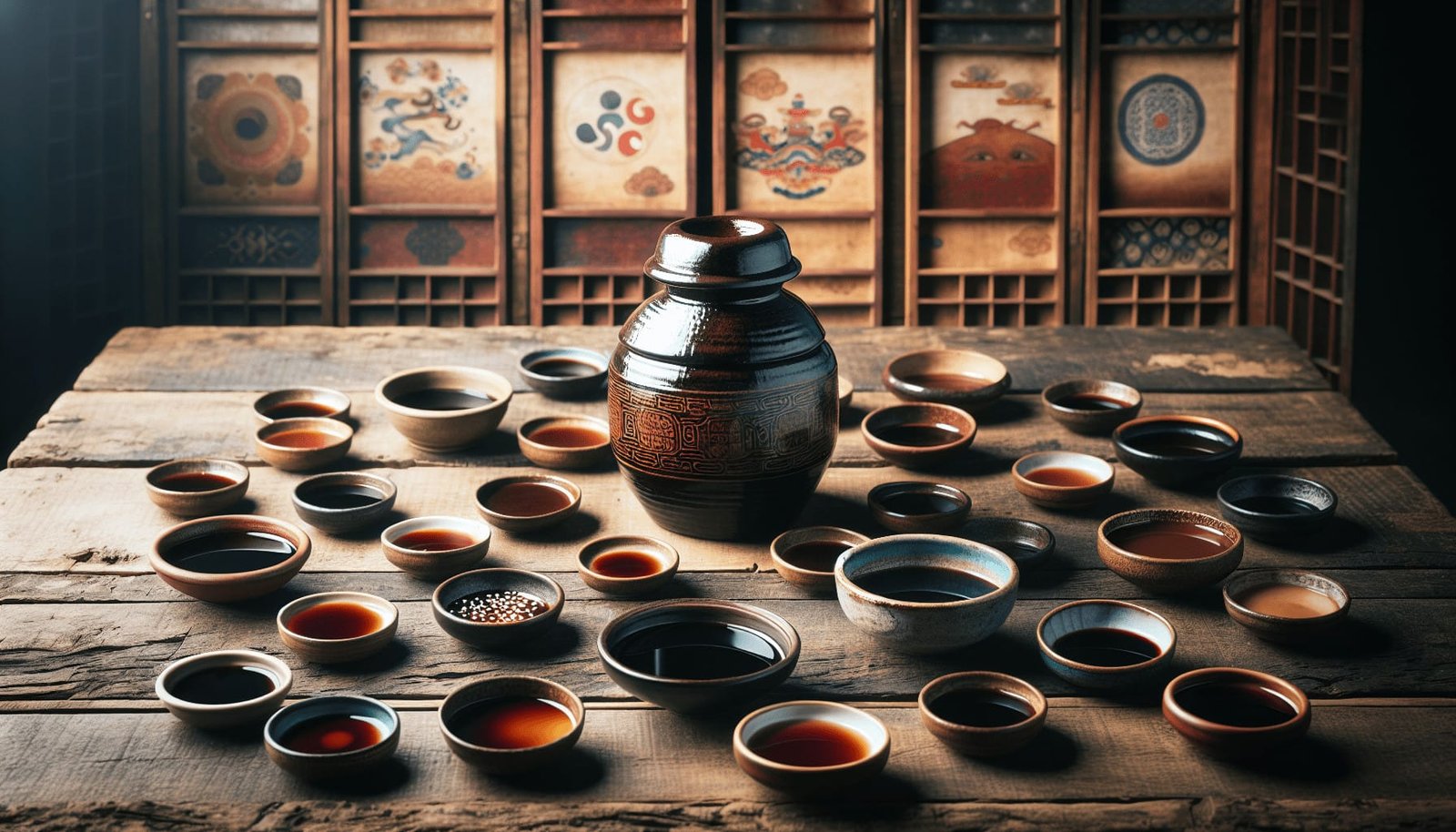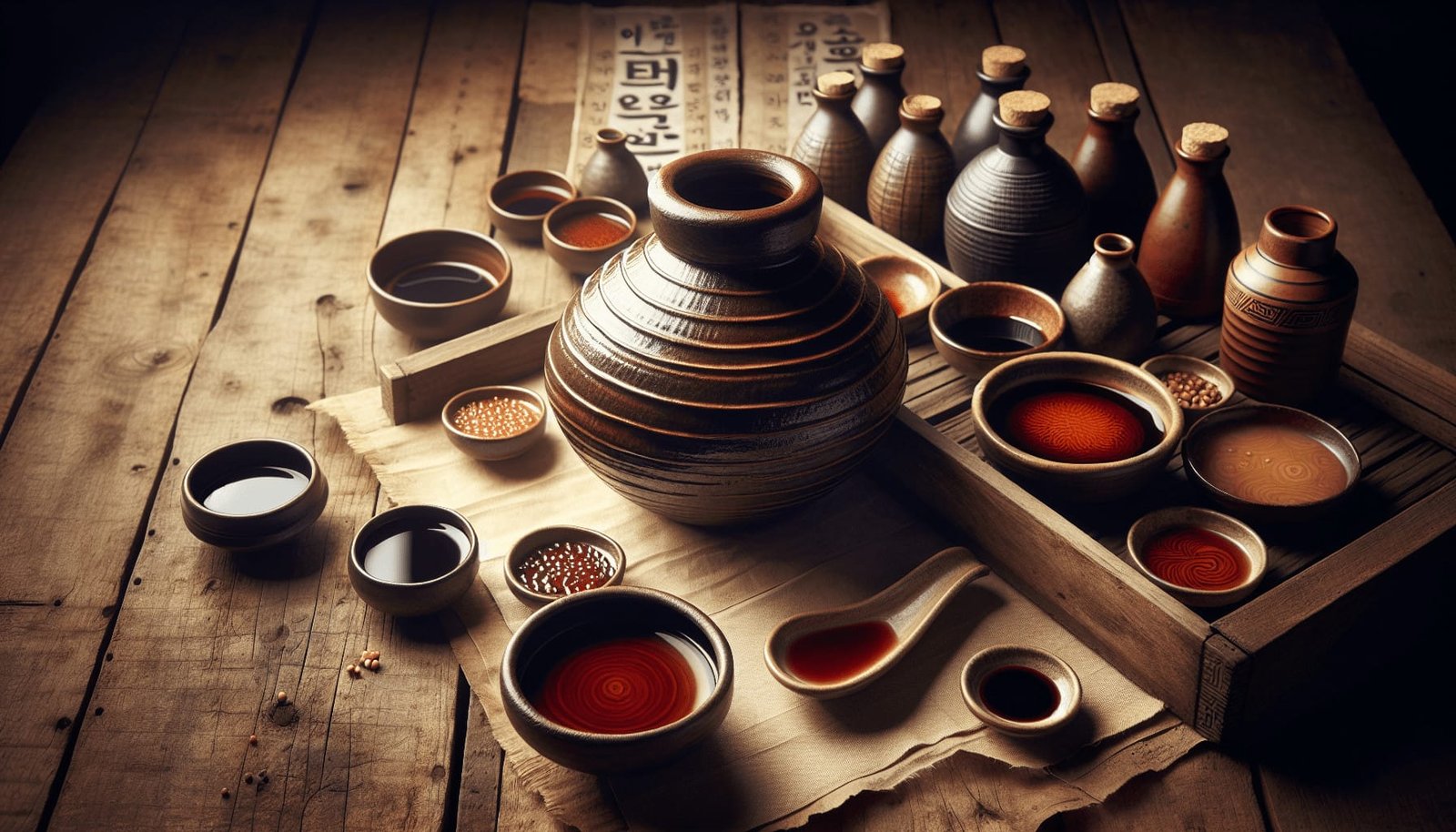Have you ever found yourself pondering over the variety of soy sauces available in Korean cuisine and wondering what makes each of them unique? You’re not alone. Korea offers a rich tapestry of soy sauces, each with its own distinct flavor, aroma, and culinary purpose. Let’s unravel the mysteries of these traditional Korean staples, so you can appreciate the art and cultural heritage behind them and make informed choices in your culinary adventures.

Understanding Korean Soy Sauces
Korean soy sauce, also known as “ganjang” (간장), is a fundamental component of Korean cooking. It is more than just a seasoning; it is the cornerstone of the distinct flavors that define Korean cuisine. Unlike the ubiquitous Japanese soy sauce, Korean soy sauce has its own unique varieties and uses, deeply rooted in tradition and history.
The Process of Making Korean Soy Sauce
The process begins with fermenting soybeans into meju, which are blocks of dried soybeans. These blocks are then aged and fermented further to create soy sauce. The fermentation process can vary, which results in different types of soy sauces with unique flavor profiles. This intricate process highlights the dedication and patience involved in producing these sauces over months or even years.
Key Ingredients
The primary ingredients in traditional Korean soy sauce are soybeans, wheat, brine, and meju. This combination undergoes fermentation under precise conditions, leading to a deeply aromatic and flavorful product. Understanding these ingredients helps appreciate the diversity in flavors among the various types of Korean soy sauces.
Types of Korean Soy Sauces
There are numerous variations of soy sauce in Korea, each crafted for specific culinary purposes. Let’s explore the primary types and their unique characteristics.
1. Guk Ganjang (국간장)
Guk ganjang, also known as “soup soy sauce,” is a staple in Korean households, particularly used in making soups (guk) and stews (jjigae). It is made without wheat, making it a gluten-free alternative.
- Flavor Profile: Known for its salty and robust flavor with less sweetness and umami than other soy sauces.
- Typical Uses: Ideal for soups, stews, and seasoning vegetables where its strong flavor can hold up against intense cooking processes. It provides depth without overpowering other ingredients.
2. Yangjo Ganjang (양조간장)
This soy sauce is a naturally brewed product, often compared to Japanese koikuchi shoyu for its similar production method involving fermentation.
- Flavor Profile: Offers a complex, balanced flavor with a good mix of saltiness, sweetness, and umami.
- Typical Uses: Versatile in use, suitable for marinades, dipping sauces, and general seasoning due to its well-rounded taste.
3. Jin Ganjang (진간장)
Jin ganjang is a blended soy sauce, combining naturally brewed soy sauce with chemically produced varieties for a more accessible option.
- Flavor Profile: Usually lighter in color and offers a balanced saltiness and umami.
- Typical Uses: Commonly used for stir-frying, grilling, and as a versatile all-purpose condiment in Korean cooking. It helps enhance the flavor of various dishes without overpowering the main ingredients.
4. Hansik Ganjang (한식간장) or Traditional Korean Soy Sauce
Often considered the most authentic form, hansik ganjang is made purely from fermented soybeans, without any added wheat or chemicals.
- Flavor Profile: Offers a distinctly rich and deep taste with a powerful umami punch.
- Typical Uses: Perfect for traditional Korean dishes, elaborate side dishes (banchan), and ceremonial foods where authenticity and depth of flavor are paramount.
The Cultural Significance of Korean Soy Sauce
Soy sauce holds a special place in Korean culture beyond being just a condiment. Its presence dates back centuries and it is intertwined with Korean history and traditions. Many Korean families continue to produce their own soy sauce, carrying forward recipes that have been passed down through generations. This cultural practice enriches the Korean culinary experience, adding a personal and historical dimension to every dish.
Soy Sauce in Korean Cuisine
Soy sauce unites Korean dishes, adding depth, enhancing flavors, and providing balance. Each type of soy sauce serves a purpose, and choosing the right one can elevate a simple meal into a sensational culinary experience.
Soy Sauce in Korean Festivals and Celebrations
In traditional Korean festivals and celebrations, soy sauce is used to craft special dishes that showcase its savory character. Whether creating ceremonial dishes or everyday meals, soy sauce plays an essential role in Korean celebrations, highlighting its importance in both the everyday and the extraordinary.
How to Choose the Right Korean Soy Sauce
Selecting the right soy sauce is key to unlocking authentic Korean flavors. Knowing the specific purposes of each type will guide you in choosing the right one for your cooking needs.
Considerations for Selection
When considering which soy sauce to use, think about the dish you’re preparing. Is it a soup that requires depth of flavor, or a marinade that needs a balanced taste? Recognizing the role of soy sauce in your recipe will guide your choice.
Balancing Flavor in Cooking
Balancing flavors is a delicate art, and understanding how different types of soy sauce influence the taste will enhance your cooking. Guk ganjang might be too salty for a raw salad dressing but perfect for a hearty soup. Experimenting with various types and understanding their flavor profiles will allow you to strike the perfect balance.

Tips for Using Korean Soy Sauce
To truly embrace Korean soy sauce in your cooking, here are a few tips that can help you use them effectively:
Cooking Tips
- Start Small: A little goes a long way with soy sauce. Begin with a small quantity and adjust according to taste.
- Pair with Ingredients: Consider the accompanying ingredients. Soy sauce complements garlic, green onions, sesame oil, and ginger.
- Enhance with Heat: Depending on the type, some soy sauces improve with heat, releasing more complex flavors.
Storage Advice
Keep your soy sauce bottles in a cool, dark place, tightly sealed to maintain freshness and prevent oxidation, which can alter the flavor.
Conclusion
Korean soy sauces are as varied as they are flavorful, each bringing something unique to the table. Whether you’re making a comforting bowl of stew or crafting an intricate banchan, the right choice of soy sauce can make all the difference.
Understanding the different types of traditional Korean soy sauces and their uses not only elevates your cooking but also deepens your appreciation for Korean culinary traditions. As you explore the rich world of Korean soy sauces, remember that each bottle carries a rich history and a story to tell. May your culinary encounters with these traditional flavors be as rewarding as the dishes they help create.
